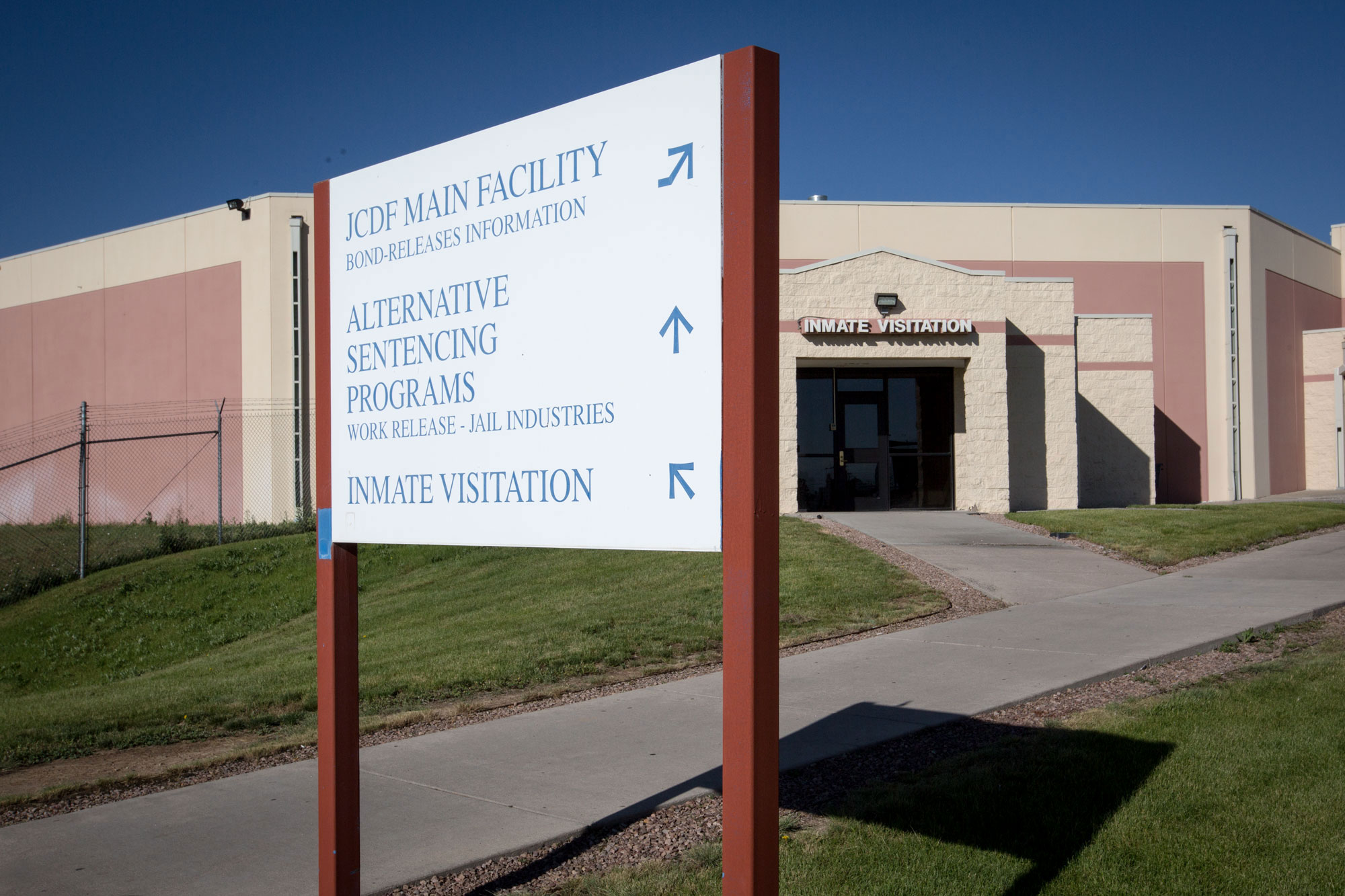Arapahoe County officials say their outdated detention facility has reached a breaking point.
Sheriff Tyler Brown took his case for a new jail straight to the public in a virtual tour of the current jail on Facebook.
“The jail is crowded, space is tight, the stress on everyone is building,” Brown told his online audience. “We lack the space to provide comprehensive services for the majority of the inmates.”
Over 2,000 people watched as Brown’s staff showed off rusty, leaking pipes, giant holes in the floors and multiple inmates crowded into cells meant to hold one. By Thursday evening, the video had around 11,000 views and more than 100 comments.
Arapahoe County hopes that by bringing voters inside the jail, even if only virtually, it will help make a difference should they need to ask for additional funds to build a new one.
The 30-year-old jail regularly houses more than three times its intended capacity of 386. Not only does that mean cramped, unsafe living conditions for the inmates, but the sheriff said it is a safety issue for deputies as well.
“Assaults on deputies are on the rise,” Brown said. “That worries me greatly. More inmates have been assaulting our deputies than ever before.”
Deputy Muhtalar Dickson, who made an appearance on the Facebook tour, worries the job now holds more peril than he signed up for.
“It seems like more so now than ever it’s an even more dangerous place to work,” Dickson said. “I make a promise to my son to come home and that promise has been getting harder and harder to keep.”

The request for new resources doesn’t end with the jail’s failing infrastructure. Sheriff Brown warns the situation is exacerbated by the lack of programs to decrease recidivism and increasing mental health needs.
“Forty percent of the inmates suffer from mental illness and they need more assistance. Think about what that means when inmates get out,” Brown said. “Studies show inmates who do not receive services or programming are likely to commit more crimes. That’s why treatment is so important.”
Arapahoe County officials believe the solution to these woes is to scrap the whole jail and build a new one.
The county bought 11 acres of vacant land immediately adjacent to the current jail in the early 2000s with the anticipation of someday building a new jail, said Jeff Baker, chair of the Arapahoe County Board of County Commissioners.
“In the long run a new jail could be more cost-effective,” Baker said.
Improvement to the adjacent county court facilities are also a part of the plan. The total cost is close to a billion dollars ⸺ $465 million for the jail and around that much for the courthouse.
In the comments section of the live tour, many wanted to know how the county would pay for the endeavor. Baker said going to taxpayers isn’t plan A.
“I have to make sure that we’ve done our due diligence, that we have looked in all of the couch cushions,” he said. “That we are using creative ways of using the money that we already have available to us.”

If history serves as any indication, asking for a tax increase to build a new jail can be a gamble for county officials. In 2018, Boulder approved funds for a new facility and Colorado Springs voters opted to continue a tax that would fund public safety.
In less affluent communities, voters have been far less willing to increase taxes. Pueblo county saw back-to-back initiatives to increase the sales tax fail in 2016 and 2017. Saguache County only has a one percent sales tax and their jail is a repurposed house, but a 2016 effort to raise taxes for a new building went nowhere.
Ted Mink, executive director of the County Sheriffs of Colorado, said this is a statewide problem, and Sheriff’s offices grapple with how to handle growing populations with mental health issues, in the face of dwindling funds.
“Tax revenues are not that great, especially in the rural areas. I feel sorry for them. They are really struggling right now to try to meet those demands,” Mink said.
Mink thinks the big issue is that people don’t understand all the nuances of running a judicial system.
“It’s a hard sell for a voter to latch on,” he said. “All they see is the dollars and cents, that we’re gonna create bigger jails, more jails and it’s coming out of the taxpayers pocket.”
Mink believes success lies in showing voters that the jail is more than a place to lock people up, and that treating mental health and substance abuse is a big piece of what they do day-to-day.
In 2018 Colorado saw 12 mental health initiatives on the ballot — more than ever before — and all but one passed. In many cases, the pitch was that better services on the outside could decrease the number of people who end up in and need help from a jail cell.









